Welcome to build a den day! If you’re following along with our stay-at-home, screen-free activities, get ready for some construction.
by Cathy James
Welcome to build a den day! If you’re following along with our stay-at-home, screen-free activities, get ready for some construction.
by Cathy James
There’s something so wonderful about creating a small world to play with.
Whether your child loves dolls, trains, dinosaurs or diggers, setting up a miniature land, where they can imagine, role play, chat and act our stories, is packed full of play and learning potential.
Here are fifteen of our favourite small world play ideas, and invitation for you to join in with us.
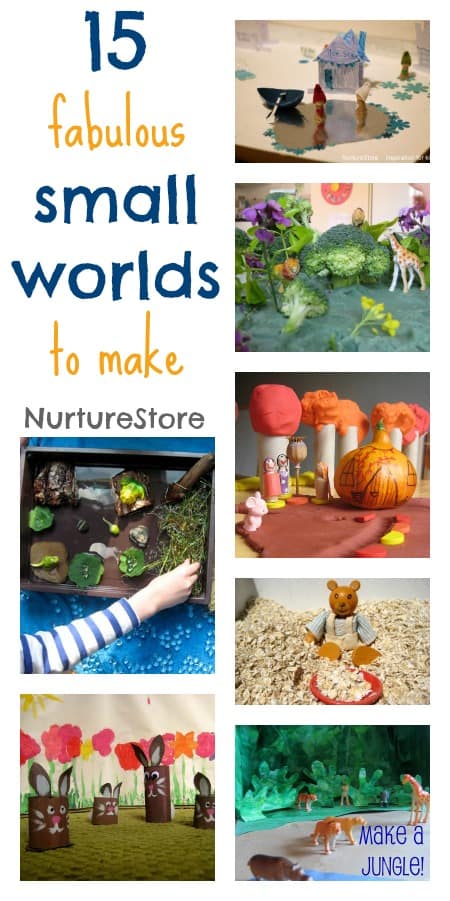
by Cathy James
Sensory play is so important for children, as they explore and learn about the world. Use these fun sensory tubs ideas, to make easy sensory play activities for babies, toddlers, and beyond!

Click to play on the video above to see our sensory tub masterclass. You’ll learn how to make a sensory tub for your children using simple materials, the benefits of sensory tubs for children, and how to use a sensory tub to teach children about math, literacy, science and fine motor skills.
You’ll also see lots of ideas for sensory tub fillings plus find out how to get great printables to add to your tubs. Subscribe to NurtureStore’s YouTube channel to get more sensory play videos!
Very simply, a sensory tub is a container of some kind, filled with a variety of materials that encourage children to explore with all their senses. You don’t need any special equipment, and because they are so easy to make, you can keep changing the contents to offer your children lots of interesting experiences.
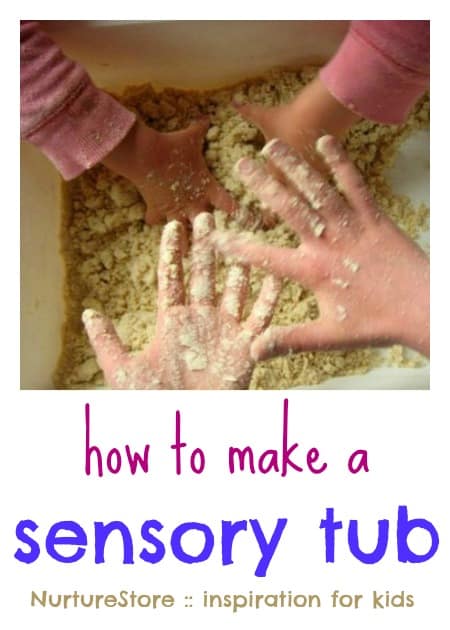
There are three basic components to a sensory tub:
One: a container. You’ll need something large enough to hold a variety of items, but shallow enough to allow your child to be able to reach inside and explore. We most often use a plastic under-the-bed storage box, but a cardboard box, washing up bowl, paddling pool, purpose-made sand and water table, or even the bath tub can all be good alternatives.
Two: a base material. You can just pop your sensory items in the tub on their own, but using a base material turns the sensory tub into a lucky-dip treasure hunt, where your child can dig down inside and discover hidden goodies. Materials that make good base materials include water, rice, pasta (both dried or cooked), sand, mud, oat flakes, shredded paper, grass clippings, leaves…
Three: added extras! Try to include a rich variety of materials within the tub, so your child can explore using all their senses. You can add things with different textures, smells, shapes, colours and sizes. Anything goes, so long as the items are safe to handle and you know your child will enjoy playing with them. You can print of this poster of ‘loose parts’ ideas for suggestions, and take a look at tubs featured below for ideas.
You can use sensory tubs for the pure delight of exploring the senses, as a way to calm or stimulate children, and also for maths, literacy and imaginary play. Here are some suggestions to try.
You might like to give your sensory tub a theme, perhaps including things that are all the same colour, or the same shape.

For different textures you could try rose petals, coloured salt, homemade cloud dough, or glittery bubbles.
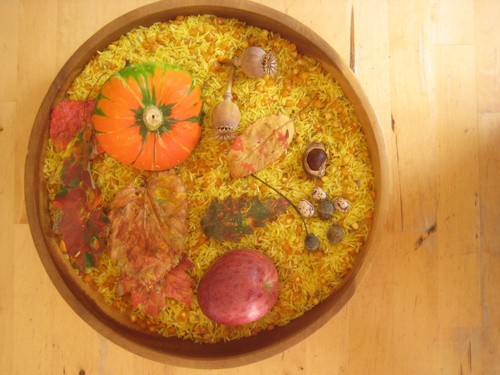
Try seasonal tubs with these ideas for spring, summer, autumn and winter.
You could make a sight word sensory tub with hidden letters inside.

Sensory tubs are great for small world imaginary play: try this sleepy bunnies tub, or this frog pond.
Or try using a sensory tub for storytelling with our Goldilocks and The Three Bears printable puppets set.
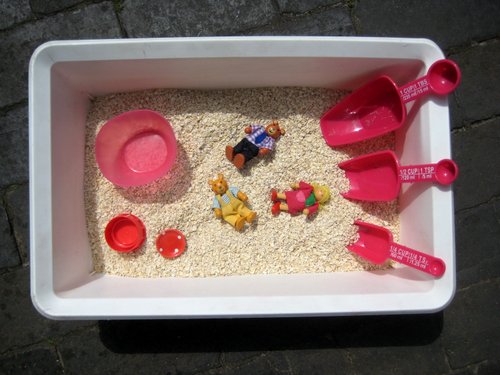
Sensory tubs are still great for older children too. Try learning spelling in a sensory tub full of coloured salt.
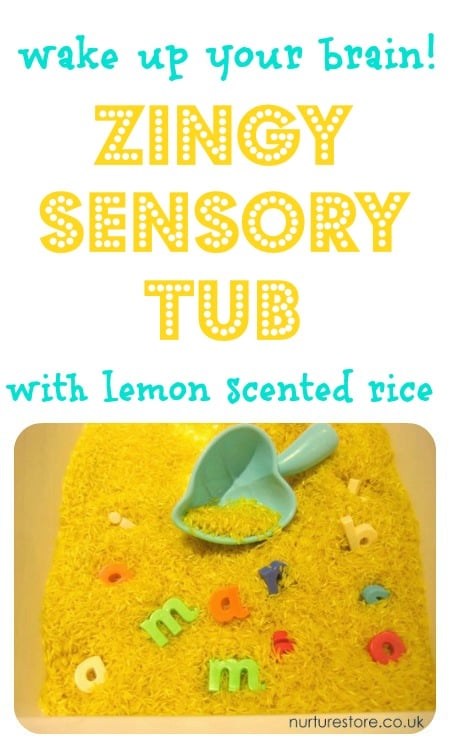
A sensory tub can be a particularly useful activity when you need to transition from one time to another, such as coming home from school or before bed time. Give this zingy lemon sensory tub, or this relaxing bedtime lavender tub a try.
by Cathy James
Today’s invitation in the Stay at Home, Screen Free Activities Programme is all about play dough.
Never made it before? Run out of ideas for something new?
Here are my top ten play dough ideas – and an easy recipe for homemade playdough.
by Cathy James
Day Eleven of our Stay at Home, Screen Free Activities Programme is all about kids in the kitchen.
Cooking with kids offers opportunities to have fun, learn great life skills, and work on every day maths and science. Plus you might end up with something yummy to eat too.
If you need ideas for easy kids recipes, here are our favourites – all tried, tested and eaten by us!
by Cathy James
Welcome to day nine of our Stay at Home, Screen Free Activities Programme, where today we’re sharing nature walk ideas.
Read on for ideas for observing the seasons and using your walk as a springboard into art, craft, and sensory play.

